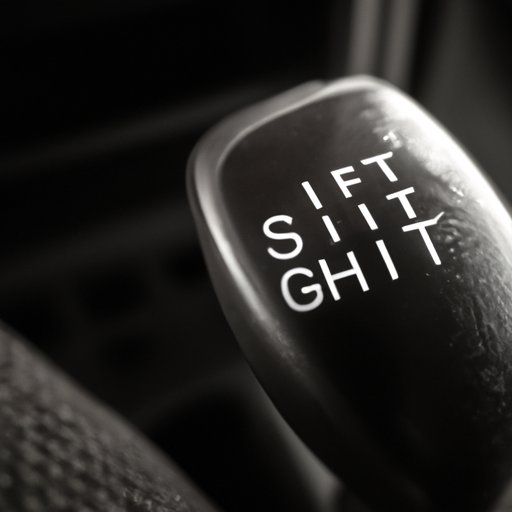
Introduction
Learning how to drive a stick shift can be a daunting task for many people, but it’s an important skill that can increase your employability and make you a better driver. Despite the prevalence of automatic transmissions, there are still many situations where knowing how to drive a manual car will be essential. This article will provide a comprehensive guide to driving a stick shift, from basic terminology to advanced techniques.
Basic Terminology
Before diving into the step-by-step guide, it’s important to understand some key terms related to stick shift driving. The clutch is a pedal located to the left of the brake that disengages the engine from the gearbox. The shifter is a lever that controls which gear the car is in. The gearbox is the component that houses the gears and connects the engine to the wheels.
When shifting gears, the clutch must be pressed to disengage the engine from the gearbox, the shifter is moved to the desired gear, and then the clutch is slowly released to engage the engine with the gearbox and the wheels. This process requires a delicate balance between releasing the clutch and pressing the gas pedal to increase engine speed.
Step-by-Step Guide
Now that you understand the basic terminology, let’s dive into a step-by-step guide for driving a stick shift.
Starting the Car
Before starting the car, make sure the parking brake is engaged and the gear is in neutral. Press the clutch all the way down to the floor and turn the key to start the engine. Once the car is running, release the clutch slowly until you feel the car begin to move forward.
Shifting into First Gear
With the car in first gear, release the clutch slowly until you feel the car begin to move. Add a small amount of gas to prevent stalling. Once the car is moving, release the clutch fully and continue to accelerate.
Upshifting
Once you reach around 3,000 RPM, it’s time to upshift to the next gear. Press the clutch all the way down to the floor, shift the shifter to the next gear, and release the clutch slowly while accelerating. Repeat this process for each subsequent gear.
Downshifting
To downshift, press the clutch down and shift to a lower gear while still pressing the clutch. Slowly release the clutch while pressing the gas pedal to match the RPM of the lower gear. This technique, known as rev matching, is important to prevent the car from jerking or lurching when downshifting.
Shifting While Turning
When turning, it’s important to shift before entering the turn to maintain control of the car. Shift to a lower gear before entering the turn and then shift back up once the turn is completed.
Avoiding Common Mistakes
Common mistakes when learning how to drive a stick shift include stalling, grinding gears, and riding the clutch. To avoid stalling, release the clutch slowly and give the car enough gas. To avoid grinding gears, make sure the clutch is fully pressed before shifting and avoid shifting too quickly. To avoid riding the clutch, only press the clutch when necessary and release it fully when changing gears.
Personal Experience
Learning how to drive a stick shift can be a challenging experience, but it’s also rewarding. When I first started, I struggled with finding the bite point and matching revs when downshifting. However, with practice and patience, I was able to overcome these challenges and become a confident stick shift driver. Some tips that helped me were practicing on a flat surface first, finding an experienced friend to ride along and offer advice, and focusing on one technique at a time until it felt natural.
Popular Myths
There are many myths and misconceptions about driving a stick shift, such as the belief that you need to downshift at every stop sign. In reality, downshifting is only necessary when you need more torque to accelerate or slow down, such as when going up or down a hill. Other common myths include the idea that stick shift cars are slower, less fuel-efficient, or more difficult to drive than automatic cars. These myths are false or misleading, and stick shift cars can actually provide a more engaging and enjoyable driving experience.
The Importance of Practice
Like any skill, learning how to drive a stick shift requires practice. It’s important to find a safe and spacious area to practice, such as an empty parking lot or quiet side street. Repetition builds confidence and muscle memory, so be patient and don’t give up if you make mistakes at first. Even after you feel comfortable driving a stick shift, it’s important to continue practicing to maintain your skills.
Safety First
Driving a stick shift requires more focus and coordination than driving an automatic car, so it’s important to prioritize safety. This includes managing clutch and brake pedals in different situations, such as hills or heavy traffic. Don’t be distracted by activities like texting or eating while driving, and always be aware of your surroundings. Remember, safety should always come before convenience.
Conclusion
Learning how to drive a stick shift can be a challenging but rewarding experience. By understanding the basic terminology, following the step-by-step guide, and practicing regularly, you can become a confident stick shift driver. Remember to prioritize safety, dispel common myths and misconceptions, and share your own tips and experiences with others.




